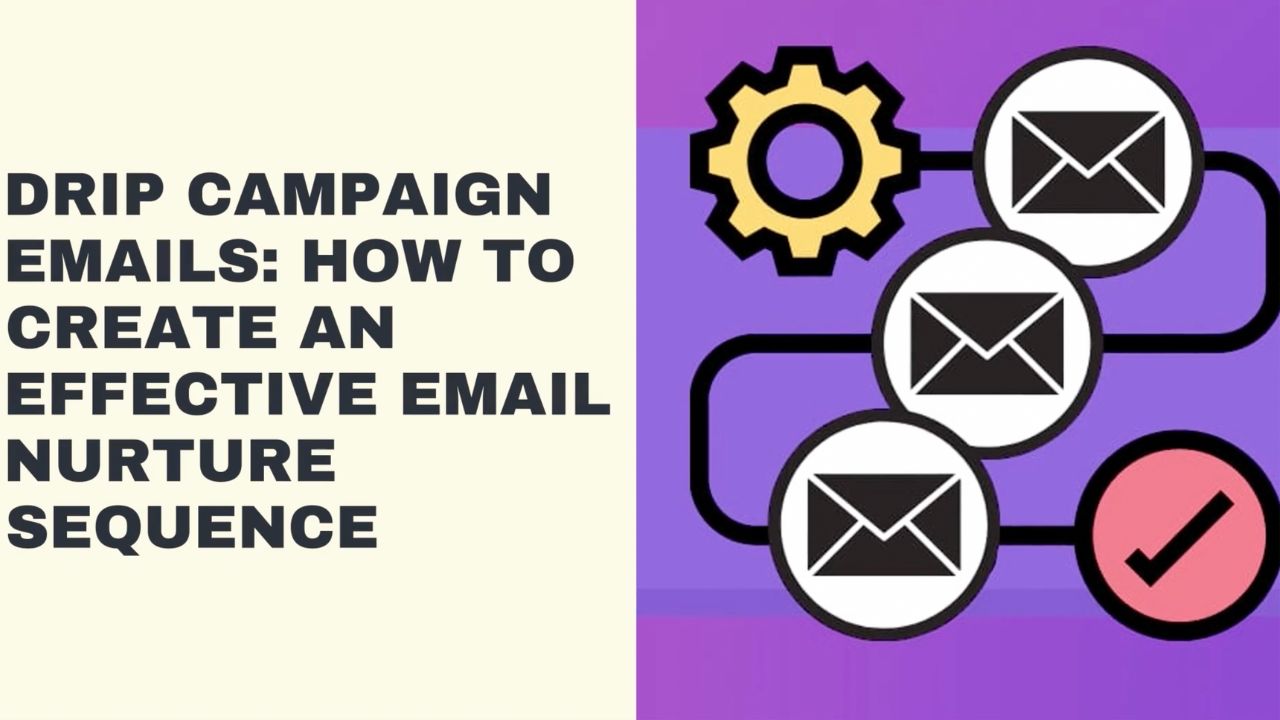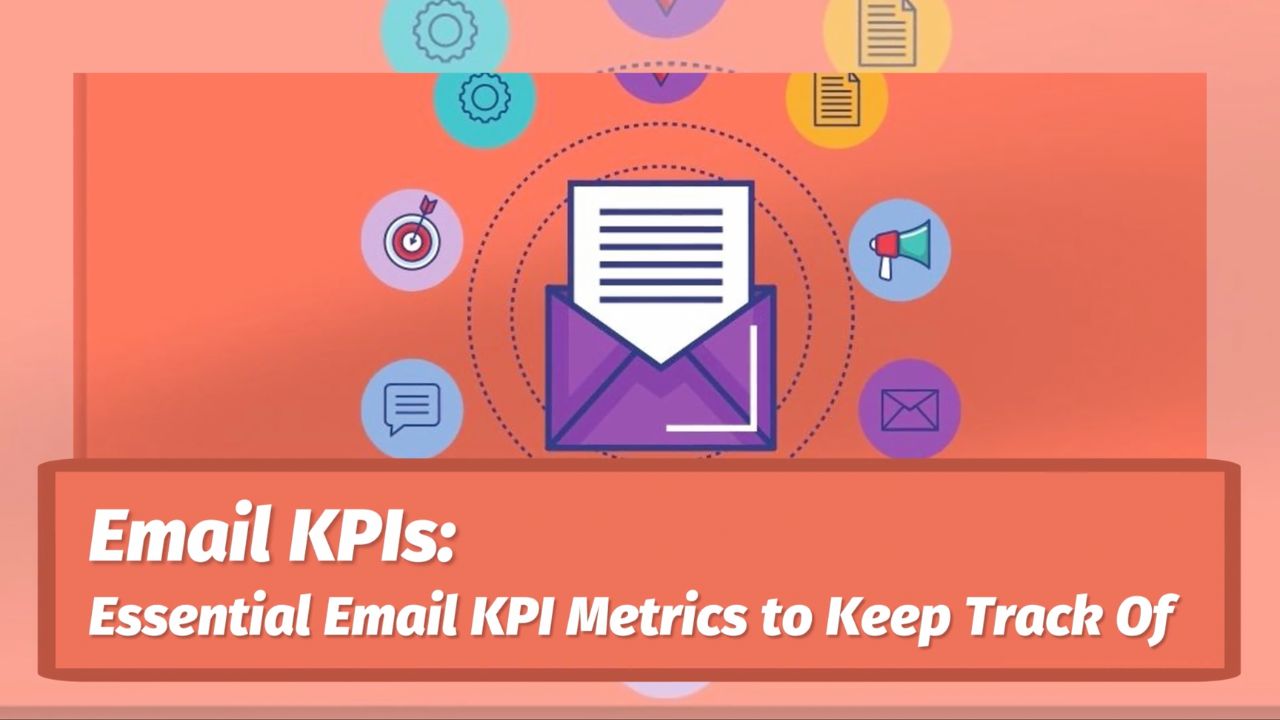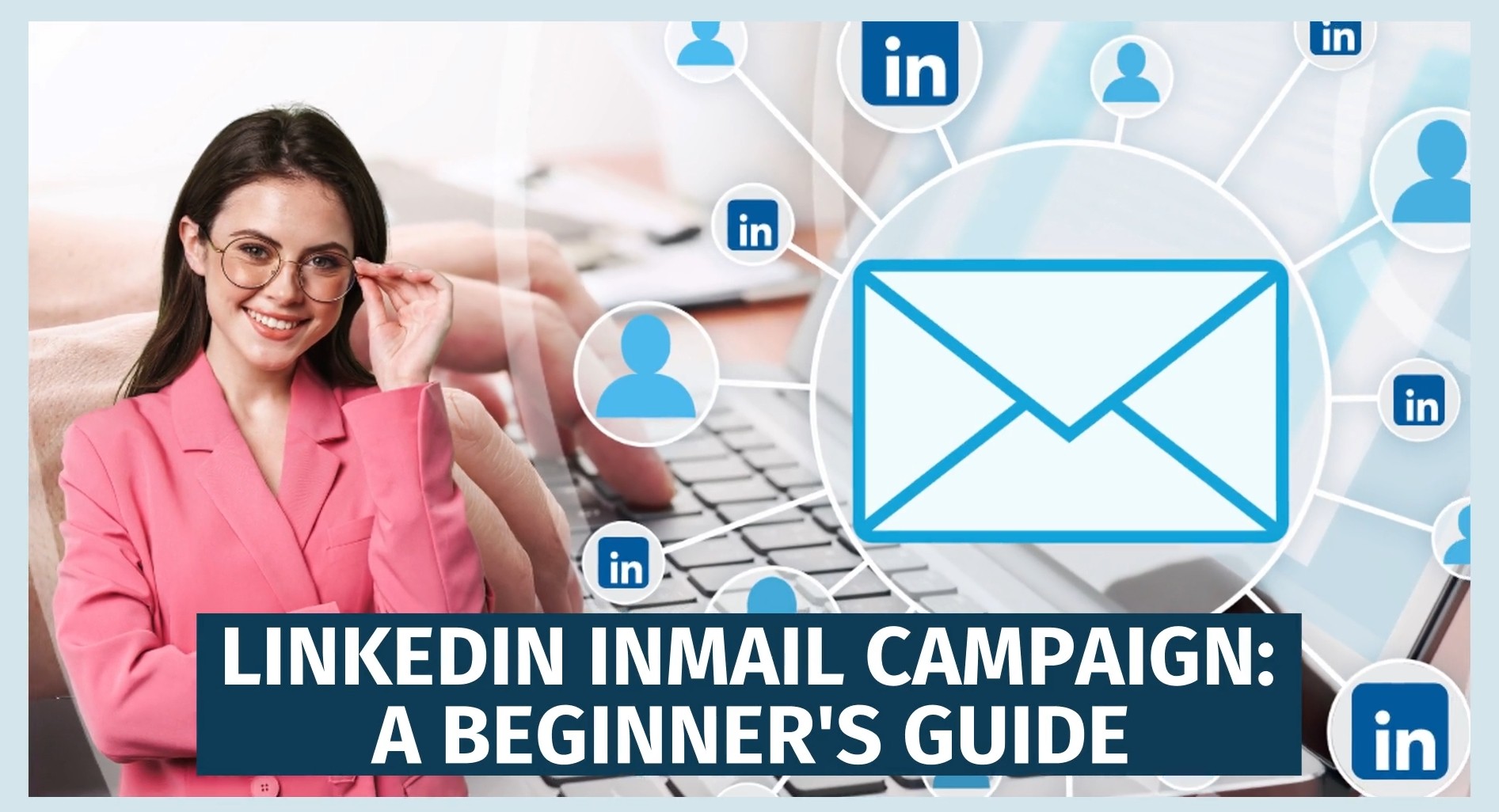Email marketing is one of the most profitable marketing channels out there, delivering an astonishing 4,200% return on investment.
In other words, for every $1 you spend on email marketing, you get $42 back.
So if you’re not using email marketing yet, the good news is that you have a golden opportunity right in front of you that could add some serious revenue and growth, when implemented in the right way.
It's important of course to ensure your drip campaign emails are set up to be as effective as possible.
That's what this post helps you to do.
You'll discover exactly how to create an effective email nurture sequence for your business that can go out on auto-pilot, and:
- Remind subscribers that you exist
- Build the relationship
- Encourage them to do business with you
- Grow business revenues.
Let's start by looking at exactly what a drip campaign is...
What Is a Drip Campaign?
A drip campaign—or email nurture sequence—is any marketing campaign where the prospect gets messages ‘dripped’ out to them over time in a set sequence.
So when they first sign up, they might get an initial message immediately, the next one on the following day, another a couple days later… you get the idea.
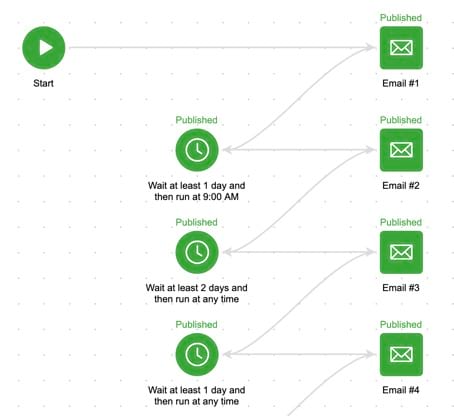
More often than not, if someone’s talking about a ‘drip campaign’, they’re referring to emails, and that’s what we’re focusing on here.
But the term can apply to other outbound media too, including:
- SMS messages...
- Direct mail...
- Facebook Messenger...
- Even telephone calls!
Unlike say direct mail, the advantage of email is the level of automation that can be achieved with a drip campaign.
(You might also hear it referred to as an autoresponder campaign—in other words, an email campaign that automatically responds with a sequence of messages after someone’s signed up).

And yes, setting up a new campaign can take some time (over the years, I’ve set up hundreds!)
But once done, each new subscriber to the campaign will get the same sequence of messages in the same order, based on when they first signed up.
Depending on the capabilities of your email campaign service, you can delay the next message in a sequence by days, hours, even minutes!
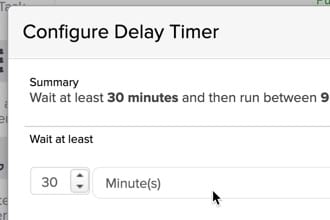
The number of messages in a sequence is completely up to you. We’ll look at different options soon, depending on your goals.
Drip Campaign Goals
“...there are only three ways to increase your business:
1 - Increase the number of clients.
2 - Increase the average size of the sale per client.
3 - Increase the number of times clients return and buy again...A 25 percent increase in these categories nearly doubles your income…”
Jay Abraham, Getting Everything You Can Out of All You’ve Got
The broad goal of a drip campaign is likely to be one of three main options as follows, each of which are vital revenue drivers for a business…
1. Convert Prospects to Customers
This is designed to build the relationship with new prospects on your list, so they start to feel a sense of familiarity with you.
Done right, through repeated communications, they’ll come to know, like and trust you.
The overall aim is to move a prospect from someone who knows little or nothing about you, to becoming a customer by making a purchase of some kind (see #1 on Jay Abraham’s list above).
2. Build Lifetime Customer Value (LCV)
Once someone has become a customer, you want to maintain that relationship for as long as possible so they continue to purchase from you.
In other words, the goal is to maximize the value of that customer to your business, and thereby help achieve #3 on Jay Abraham’s list above.
Building LCV (sometimes referred to as CLV, CLTV or LTV!) has a huge knock-on effect on the rest of your business and become a significant catalyst for growth.
With each customer worth more, you can spend more to acquire them.
“He who can spend the most to acquire a customer, wins.”
Dan Kennedy

3. Reactivate Lost Customers
For multiple reasons, customers at some point stop buying from a business.
But that doesn’t mean they stop buying forever.
They often simply need to be encouraged back into the fold.
Speaking personally, I’ve often returned to businesses after sometimes years of absence simply because they sent me drip campaign emails encouraging me to do so.
It’s far easier, not to mention cheaper, to reactivate an old customer than to convert a cold prospect—yet the majority of businesses make no attempt to do so.
With email, it’s easy, cheap and effective.

Types of Drip Campaign Emails
Once you’ve decided on the broad goal of your campaign (and we’ll look at getting more specific shortly), there are various types of emails you can send out in it. Here are just a few ideas:
- Video email—an email in which you link to a video, perhaps introducing yourself and/or your business...
- Offer email—an email that contains say a great introductory deal they’d find hard to refuse (remember, once someone’s bought from you once and you’ve moved them from ‘prospect’ to ‘customer’, they’re far more likely to buy again than someone who’s yet to buy anything)...
- A story-based email—an email containing an engaging story that hooks them in, helps them relate to you, and helps them remember you in future…
- How it works—an email outlining in simple terms exactly how your product or service works...
- It worked for them—one of the most powerful tools in marketing is the testimonial. People are far more likely to believe what other people say about a business, than what a business says about itself. So use testimonials in one or more drip campaign emails—prospects will come to the conclusion all by themselves that ‘it worked for them, so hey, it might work for me too!’...
(By the way, if you’re looking for really good subject lines for some of the above ideas that help get your emails opened, check out this post)...

How to Create Your Own Email Nurture Sequence That Works
Creating a great email nurture sequence or drip campaign starts with planning effectively.
“If you don’t know where you are going, you’ll end up someplace else.”
Yogi Berra
Once you’ve planned them out, you can start to craft your messages, and finally add them to the drip campaign.
Here are the five steps you need:
1. Determine Your Broad Goal
Take a look at the list of drip campaign goals in the section above.
The broader goal for your campaign is likely to be one of these, so determine yours and write it down—doing so helps you focus.
2. Determine Your Specific Goal
Now drill down into that broader goal.
What is it more specifically that you want to achieve? This is where you get really specific for your own business.
This might involve making a specific offer right from the start, or gently nurturing the prospect by supplying information that helps you to make an offer further down the line.
Here are some possibilities:
- To sell X to new prospects
- To encourage prospects to request a consultation
- To advertise a sale, such as a discount off a specific product or service or a general sale
- To introduce a new product to your customer base
- A general sequence for new customers to encourage additional or repeat purchases
- To encourage old customers to start buying from you again with an offer they can’t refuse for X

3. Plan Your Email Sequence
Now start planning out what each email in your sequence is going to look like.
A. How many messages do you want to send out?
If it’s to existing customers, and you’re running a drip campaign for a limited time offer, you may only want a handful, spread out over a few days until the offer closes.
But if it’s to build a relationship with new prospects, you likely want a lot more.
After all, studies have shown that prospects need to hear or see your message at least 7 times before they’re likely to take any action.
Because they’re unlikely to open every email you send, you need a lot more than 7 emails to achieve that (one of my sequences has 52!).
B. How will your messages be spaced out?
For a new prospect, sending out a message just once a week is unlikely to be enough to build familiarity.
At least twice a week is recommended, and probably more than that—with the sheer volume of emails, prospects are liable to forget about you remarkably quickly.
And many businesses experience a significant lift in revenue and other metrics when they start sending out daily emails, even if they start out initially a little reticent about doing so.
As a general rule, most businesses don’t send out anywhere near enough emails.
C. Draw up a rough outline of what’s in each email.
Before you start writing emails, you want a rough plan of what each one is going to say, so that you have a sequence that helps achieve your marketing goals.
So, using say a spreadsheet where you can move the rows up and down (a Google Spreadsheet works great!), write a sentence or two about each email providing a rough outline as to the content and what you want to say.

4. Create Your Drip Campaign Emails
Yes, this is where the work really begins.
Remember, what you’re really creating here is a long-term asset for your business.
A drip campaign or email nurture sequence can run profitably for years with only the odd adjustment.
So it’s worth taking the time to do them well, or employing a copywriter to help.
It’s best to write as many of them as you can in one sitting.
That way, you get into a certain flow, and the emails tend to be higher quality.
Write them first in say Word or in a Google Doc (I always use the latter) so you can easily go back and forth between emails adjusting them and refining your messaging as you go.
Use subject lines that are going to entice your subscribers to open your email (here are some other ways to increase open rates).
Then, and this is important, leave them alone.
After a couple days, run through them again and polish them up—you’ll be surprised how much you can refine and improve them by coming back to them with fresh eyes.
This can make all the difference in making your campaign really effective.
5. Add to Your Email Campaign Service
The way you set up your drip campaign or email sequence will depend on the email campaign service you use.
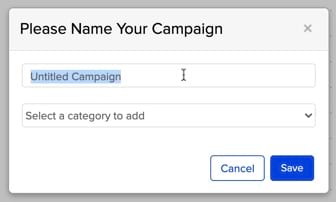
But, broadly speaking, setting up your email campaign will look something like this:
a. Click to add a new campaign.
b. Click to add a new email to the campaign.
c. Add the email content.
d. Repeat (b) and (c), specifying the delay from the previous email.
e. Specifying something that means someone starts getting the drip campaign emails, such as a web form, or maybe a particular tag added to their contact information.
f. Optionally specifying some kind of trigger or goal that means someone drops out of the campaign—for example, they’ve bought something, so no longer need to receive further emails.
Frequently Asked Questions
What is a drip campaign?
A drip campaign is a marketing sequence where messages are sent out to prospects over time in a set order through various channels, typically starting immediately upon signup.
What are the broad goals of a drip campaign?
Broad goals include converting prospects to customers, building lifetime customer value, and reactivating lost customers to maximize revenue and business growth.
What types of emails can be part of a drip campaign?
Email types can include video introductions, special offers, story-based content, product explanations, and customer testimonials to engage and convert prospects.
How can I create an effective email nurture sequence?
- Determine specific goals. 2. Plan email sequence. 3. Write emails outlining content. 4. Use enticing subject lines. 5. Review, refine, and add to email service.
To Conclude
In this post, we’ve looked at how to set up drip campaign emails, whether your goal is to convert prospects into customers, build lifetime value by encouraging repeat purchases, or reactivate lost customers.
Whatever your goal, creating an effective email nurture sequence that drives recipients towards taking a specific action can be an immensely powerful profit driver for your business, and an asset that keeps on delivering for years.
